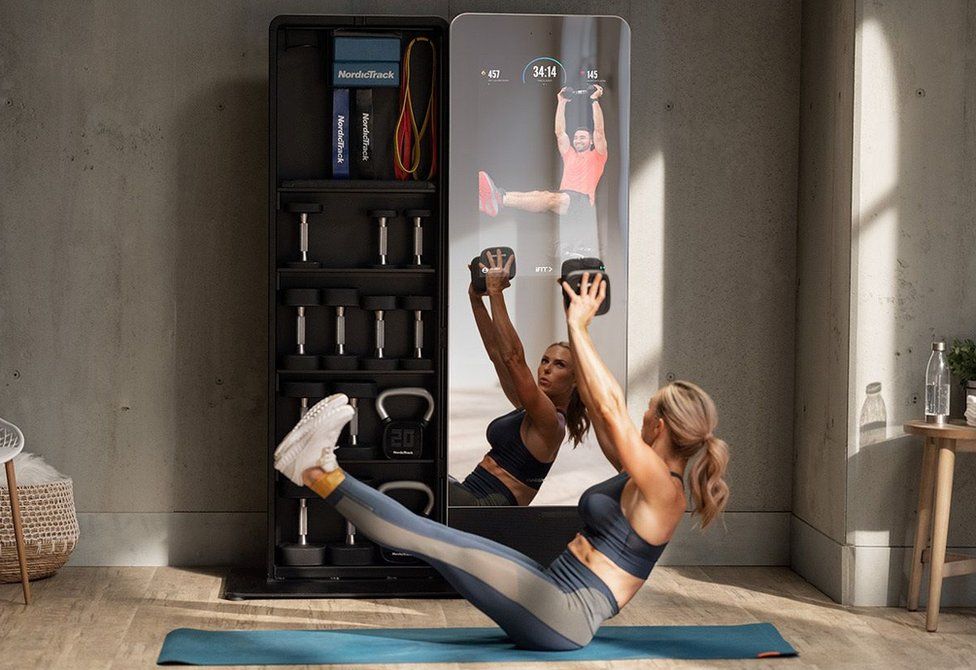As technology continues to advance at breakneck speeds, the fitness industry has been quick to embrace connectivity. Smart watches, headphones, fitness trackers and more now integrate seamlessly with mobile devices and apps, allowing users to quantitatively track their workouts, activities and health metrics like never before. Brands like Fitbit, Garmin, Apple Watch and Polar have cornered the market on connected devices designed specifically for fitness and wellness. The data and insights these tools provide have transformed what was once a subjective experience into objective metrics that motivate users and enable them to optimize their routine.
Connected gear has seen tremendous growth in popularity in recent years. According to data from Global Industry Analysts, the global market for wearable fitness technology is projected to reach $34 billion by 2022. Smartwatches alone are expected to account for over 35% of the market. As the capabilities and functionality of these devices increase while prices decrease, experts predict connectivity will soon be a standard and expected part of virtually all workout gear and equipment. Companies large and small are working to integrate connectivity into everything from treadmills to dumbbells to yoga mats.
The Rise of At-Home Connected Equipment
One of the biggest trends of Smart Fitness seen in recent years is the rise of at-home connected fitness equipment. With busy schedules and the desire for convenience, many people are opting to workout at home rather than commute to the gym. Major equipment manufacturers like Peloton, Mirror and Tonal have stepped up to offer high-end at-home options that rival or exceed what a commercial gym provides.
For example, Peloton is best known for its connected indoor cycling bikes that stream live and on-demand classes directly to users’ homes. By integrating a tablet display and combining software with stationary bikes equipped with sensors that track metrics, Peloton has completely transformed the in-home cycling experience. The bikes allow riders to join virtual group classes and compete on global leaderboards all without ever leaving home. Peloton’s success has inspired a wave of similar connected strength and cardio products.
Mirror is another popular at-home option. Its large interactive display mounts to a user’s wall and streams live and on-demand workouts from almost any discipline – from yoga to cardio to strength training. High-resolution cameras and microphones allow trainers to see and hear members, fostering a more personal experience. Tech like this has truly brought the boutique studio experience into people’s living rooms.
The Rise of Smart Gyms
While at-home solutions continue booming, brick-and-mortar gyms remain important community hubs for many. To remain relevant against the surge of at-home offerings, gyms are themselves integrating connectivity and technology into the on-site experience. This new generation of “smart gyms” uses Internet of Things (IoT) innovations to enhance workouts and create seamless member experiences.
For instance, gyms today widely employ smart cardio machines equipped with touchscreens that let users browse on-demand classes, stream music and videos, and access performance metrics. Some gyms take it a step further with motion-sensing equipment that tracks sets and reps without user input. Digital leaderboards and challenges integrated within fitness apps and club portals further gamify exercising to motivate members.
Gyms also utilize automated booking systems to reserve popular classes, equipment and studio time right from phones. Proximity-aware lockers that open using RFID tags or phones eliminate the need for physical keys. And beacon technology unlocks perks based on location within clubs. These integrations create touchless, personalized experiences that enhance member convenience.
More advanced smart gyms take IoT even further by integrating with smart mirrors, cameras and sensors throughout facilities. Mirrors in these gyms double as displays for on-demand workouts, schedules and metrics tracked throughout sessions. Motion sensors detect foot traffic and equipment usage to optimize facility layouts. Computer vision assesses form on exercises to prevent injury. These high-tech amenities redefine what a typical gym experience entails.
The Future of Connected Wellness
Looking ahead, experts envisage connectivity permeating the entire fitness and wellness industry within this decade. Advancements in areas like artificial intelligence, augmented and virtual reality, biometric sensors and gesture control will drive new innovations. Every aspect of working out from diet to sleep to stress will become quantitatively tracked and optimized. Some projections:
– Smart clothing and accessories embedded with biosensors will continuously monitor vital signs, calories burned and more with no user input required.
– VR and AR will bring immersive virtual training environments and personal trainers into any space while also digitally enhancing form and providing real-time feedback.
– AI chatbots and virtual assistants will proactively coach users on nutrition, recovery, injury prevention and long-term health goals based on individual biometric and behavioral patterns.
– Connected workout spaces will dynamically adjust lighting, temperatures and ambiences based on user data to maximize performance and enjoyment.
– Metrics from diverse datasets will empower precision wellness through hyper-personalized programs and lifestyle recommendations.
As technical capabilities continue evolving at unprecedented rates, the connected future of fitness promises to make working out, training and overall wellness more personalized, engaging and effective than ever before. It will be exciting to watch the industry push the limits of what’s possible to redefine global health and fitness standards over the coming decade.
*Note:
1. Source: Coherent Market Insights, Public sources, Desk research
2. We have leveraged AI tools to mine information and compile it

